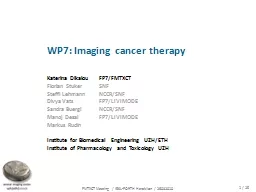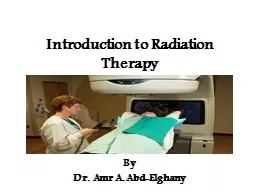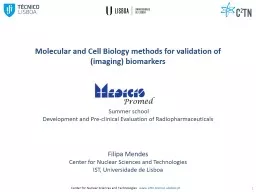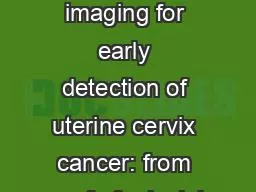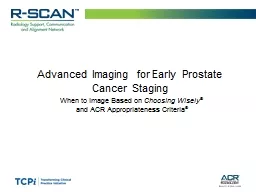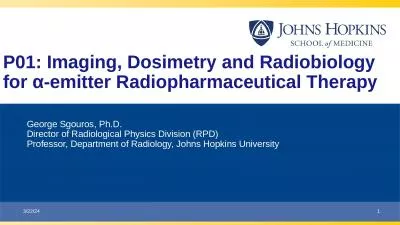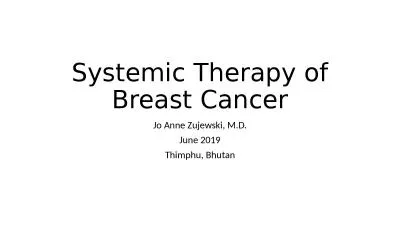PPT-WP7: Imaging cancer therapy
Author : min-jolicoeur | Published Date : 2016-04-22
Katerina Dikaiou FP7FMTXCT Florian Stuker SNF Steffi Lehmann NCCRSNF Divya Vats FP7LIVIMODE Sandra Buergi NCCRSNF Manoj Desai FP7LIVIMODE Markus Rudin Institute
Presentation Embed Code
Download Presentation
Download Presentation The PPT/PDF document "WP7: Imaging cancer therapy" is the property of its rightful owner. Permission is granted to download and print the materials on this website for personal, non-commercial use only, and to display it on your personal computer provided you do not modify the materials and that you retain all copyright notices contained in the materials. By downloading content from our website, you accept the terms of this agreement.
WP7: Imaging cancer therapy: Transcript
Download Rules Of Document
"WP7: Imaging cancer therapy"The content belongs to its owner. You may download and print it for personal use, without modification, and keep all copyright notices. By downloading, you agree to these terms.
Related Documents

